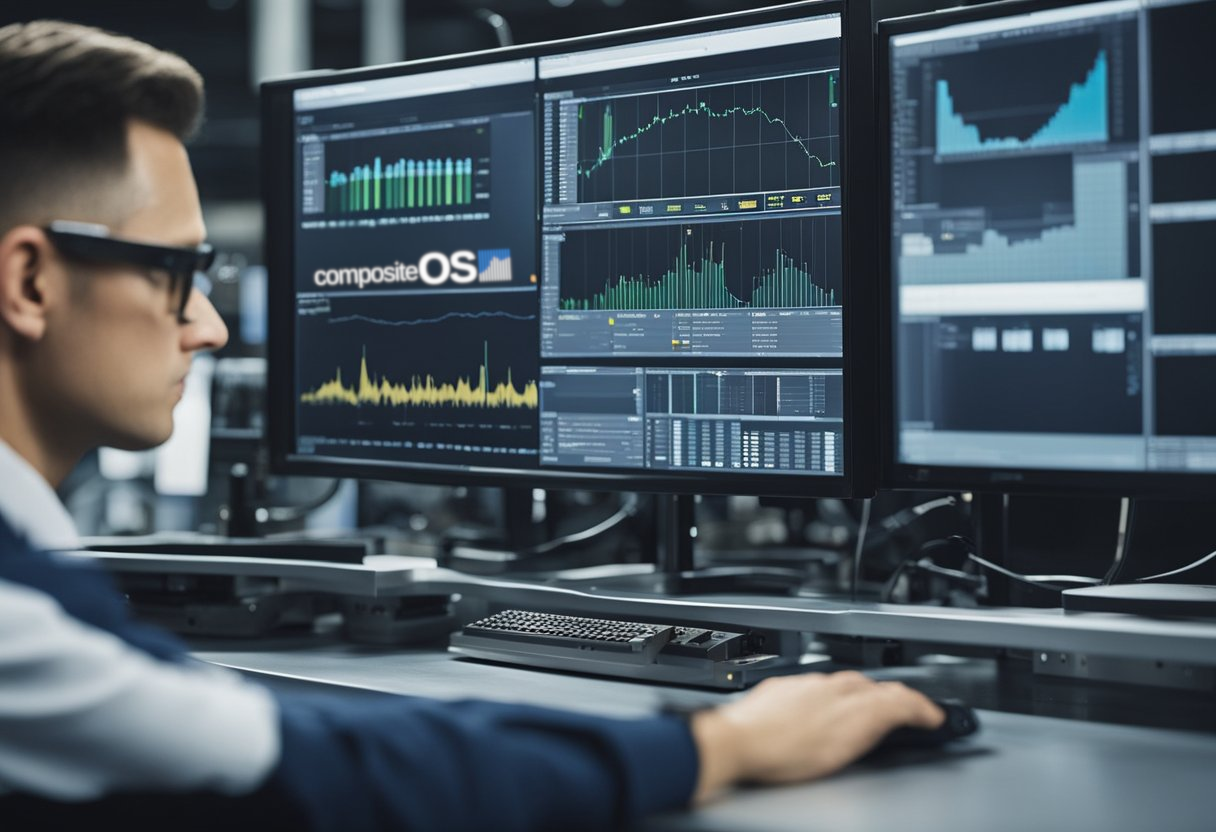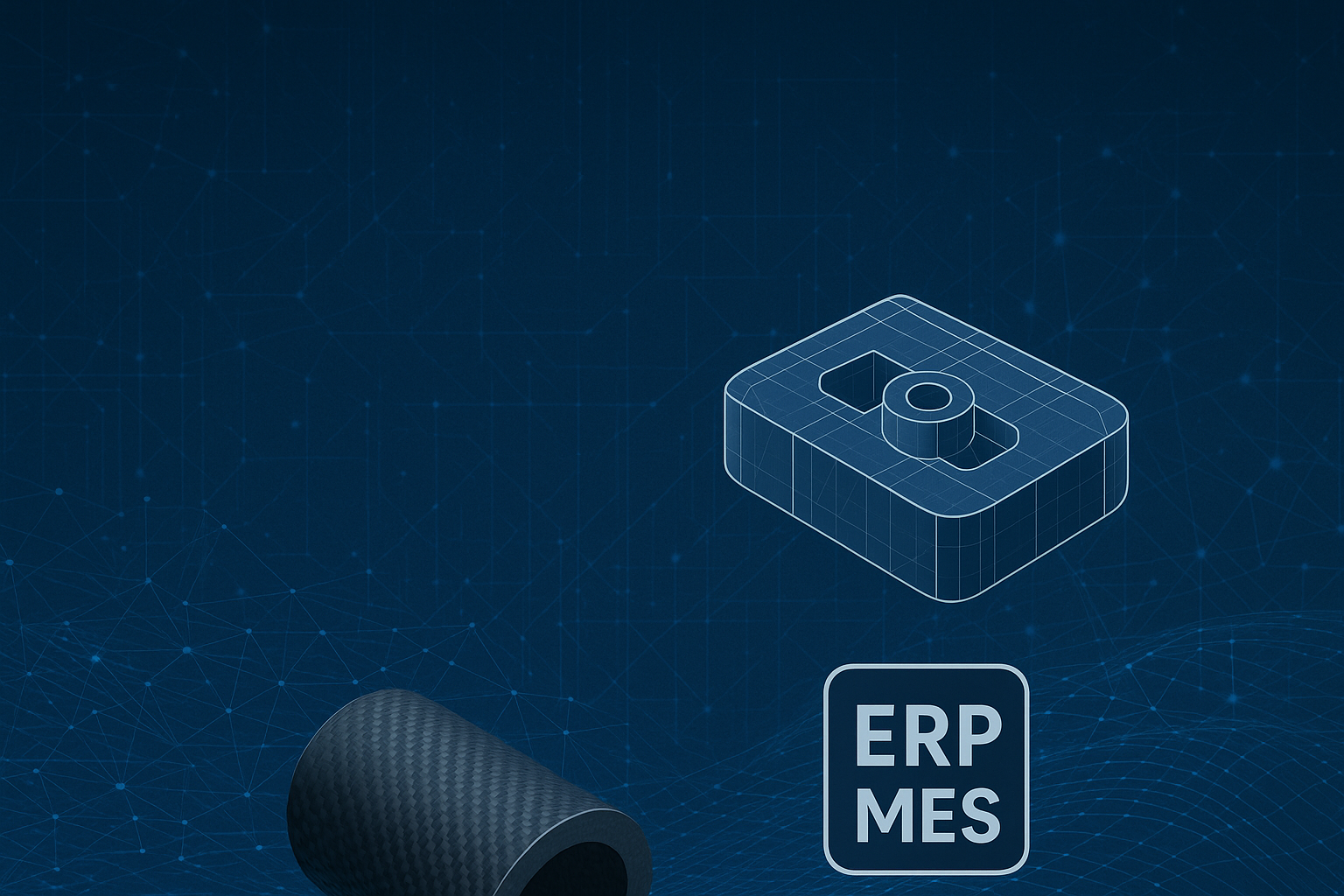Composite materials are becoming increasingly popular in various industries due to their superior strength and lightweight properties. Carbon fiber, in particular, has been widely used in the aerospace and automotive industries. However, manufacturing composite materials can be challenging, and it requires specialized knowledge and equipment to produce high-quality products.
To address the challenges of composite materials manufacturing, companies are turning to software absed solutions such as Enterprise Resource Planning (ERP) and Manufacturing Execution Systems (MES). These software systems can help improve efficiency, speed up production, and ensure consistent quality in the manufacturing process. One such system is compositeOS, a cloud-based software solution designed specifically for the composites industry.
In this article, we will explore the fundamentals of composite materials, the challenges of manufacturing them, and how technology solutions such as compositeOS, which are combining ERP and MES functionalities can help overcome these challenges. We will also take a closer look at compositeOS and how it works. Finally, we will answer some frequently asked questions about composite materials and software solutions.
Key Takeaways
- Composite materials are becoming increasingly popular in various industries due to their superior strength and lightweight properties. Nevertheless, manufacturing composites is complex prone to error.
- ERP and MES software solutions can help improve efficiency, increase speed, and ensure consistent quality in the manufacturing process of composite materials.
- compositeOS is a software solution designed specifically for the composites industry that can help overcome manufacturing challenges.
Fundamentals of Composite Materials
Composite materials have several advantages over traditional materials. They are lighter, stronger, and more durable than many metals and plastics. They are also corrosion-resistant, have a high strength-to-weight ratio, and can be molded into complex shapes.
Carbon fiber composites, in particular, have become increasingly popular in recent years due to their high strength and stiffness-to-weight ratios. They are commonly used in aerospace, automotive, and sporting goods industries.
Overall, composite materials have revolutionized the manufacturing industry and continue to be a key driver of innovation and growth.
Challenges of Composite Materials Manufacturing
Complexity in Composite Materials Manufacturing
Composite materials manufacturing is a complex process that requires a great deal of skill and expertise. Carbon fiber composites are particularly challenging due to their layered and oriented characteristics and the manufacturing processes involved. The manufacturing process involves a number of steps, including layup, curing, trimming, and finishing. Each step requires precision and careful attention to detail to ensure that the final product meets the required specifications – all considering the complex nature of the laminates.
Getting everyone aligned with great communication
Effective communication is critical in composite materials manufacturing. The customer and manufacturer must work closely together to ensure that the final product meets the customer’s requirements. The manufacturing team must also communicate effectively to ensure that everyone is working towards the same goal. This requires clear and concise communication, as well as the ability to listen and understand the needs of others.
A prototype every time: Flexibility in Composite Materials Manufacturing
Flexibility is essential in composite materials manufacturing. Each project is unique, and the manufacturing process must be tailored to meet the specific requirements of the customer. Often quantities are below 10, in most cassed being 1. This requires the ability to adapt to changing requirements and to develop flexible processes and techniques as needed. The ability to quickly produce prototypes is also essential, as it allows the customer to see and test the product before it goes into production.
In conclusion, composite materials manufacturing is a complex process that requires a great deal of skill and expertise. Effective communication and flexibility are essential to ensure that the final product meets the customer’s requirements. The manufacturing team must work closely together to ensure that everyone is aligned and working towards the same goal. All these challenged need to be adressed by an efficient ERP or MES solution. Fortunately, this is exactly what compositeOS is made for.
Enterprise Resource Planning (ERP) for Composites
Enterprise Resource Planning (ERP) is a software system that integrates various business functions such as manufacturing, purchasing, and sales. ERP systems are designed to automate and streamline business processes, reduce costs, and improve efficiency.
In the composites industry, ERP systems can be used to manage the entire manufacturing process, from raw material procurement to finished product delivery. ERP software can help composite manufacturers to optimize their production processes, automate business processes, and improve quality control.
One of the key benefits of ERP software for composite manufacturers is its ability to manage complex supply chains. Composites are made up of multiple layers of materials. Each layer, moulds, inserts or subcomponents may come from a different supplier. ERP systems can help composite manufacturers to track the origin of each material, ensure that it meets quality standards, and manage inventory levels.
Another benefit of ERP software for composite manufacturers is its ability to provide real-time data on production processes. By monitoring key performance indicators such as cycle times and defect rates, manufacturers can identify areas for improvement and take corrective action quickly.
Manufacturing Execution Systems (MES) in the Composites Industry
In addition to ERP systems, manufacturers can also use Manufacturing Execution Systems (MES) to manage production processes. MES software provides detailed information on each step of the manufacturing process, from raw material preparation to final product inspection. MES systems can help manufacturers to optimize production processes, reduce waste, and improve quality control.
Overall, ERP and MES systems are essential tools for composite manufacturers looking to improve efficiency, reduce costs, and maintain high levels of quality control. By automating and streamlining business processes, manufacturers can focus on what they do best – creating high-quality composite products that meet the needs of their customers.
How CompositeOS Works
Quoting Composite Materials Projects
CompositeOS is a powerful software tool designed to manage the complexity of composite material manufacturing. One of the key features of CompositeOS is its ability to generate accurate and detailed quotes for composite materials projects. With CompositeOS, users can easily create quotes based on customer requirements, material costs, and labor costs. The software automatically calculates the total cost of the project, taking into account all of the variables involved. The quoting engine can be fully customized according to customer’s needs.
Scheduling Composite Manufacturing
Another key feature of CompositeOS is its advanced scheduling capabilities. The software allows users to schedule composite manufacturing processes based on available resources, production capacity, and delivery deadlines. With CompositeOS, users can easily track the progress of each manufacturing process, ensuring that each step is completed on time and within budget.
Tracking Tasks on the Shop Floor
CompositeOS also offers powerful task tracking capabilities, allowing users to monitor the progress of each task on the shop floor. The software provides real-time updates on the status of each task, including information on materials used, status, and production time. This information can be used to identify bottlenecks in the manufacturing process and make adjustments to improve efficiency on the fly.
Overall, CompositeOS is a valuable tool for anyone involved in composite material manufacturing. Its advanced features and intuitive interface make it easy to manage the complexity of composite materials projects, from quoting to scheduling to tracking tasks on the shop floor. With CompositeOS, users can streamline their manufacturing processes and achieve groundbreaking success in this dynamic and challenging industry.
Frequently Asked Questions

How does ERP software integrate with MES for composite material production?
ERP (Enterprise Resource Planing) software and MES (Manufacturing Execution System) are two separate systems that work together to optimize production processes. ERP software manages business processes such as purchasing, sales, and inventory management, while MES focuses on the manufacturing process.
In composite material production, ERP software can integrate with MES to provide real-time data on material usage, production schedules, and quality control. This integration allows for better communication between different departments and improved decision-making. CompositeOS has the most important features of MES and ERP included as a standard and can be integrated into existing systems.
What are the advantages of using specialized software like compositeOS for carbon fiber composite manufacturing?
Specialized software like compositeOS is designed specifically for carbon fiber composite manufacturing. It offers advanced features such as laminate design, stock management for fibers, resins, semi-finished materials like prepregs, tooling, and optimization of processes that are not available in general-purpose software.
Using specialized software will result in faster implementation, improved accuracy, and reduced costs. It also allows for better collaboration between customer teams and manufacturing departments.
What are advantages of using cloud-based ERP and MES systems in carbon fiber-based manufacturing?
Cloud-based ERP and MES like compositeOS systems offer several advantages over traditional on-premise systems. They are accessible from anywhere with an internet connection, which allows for remote collaboration and flexibility.
Cloud-based systems also offer scalability, meaning they can easily adapt to changes in production volume or business needs. They have lower upfront costs and require less IT infrastructure, which can result in cost savings. Additionally, cloud-based systems have better security and data backup measures in place.


